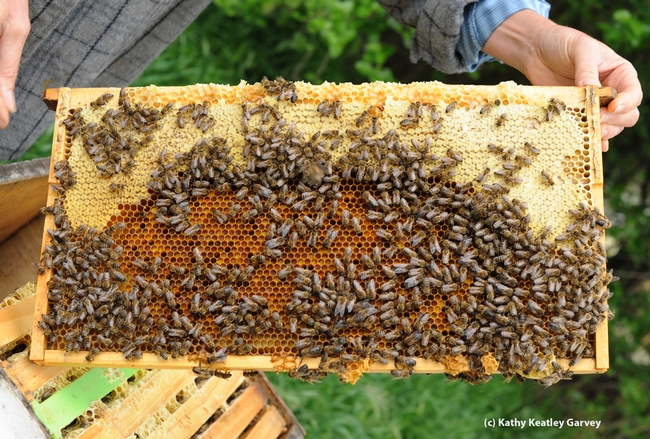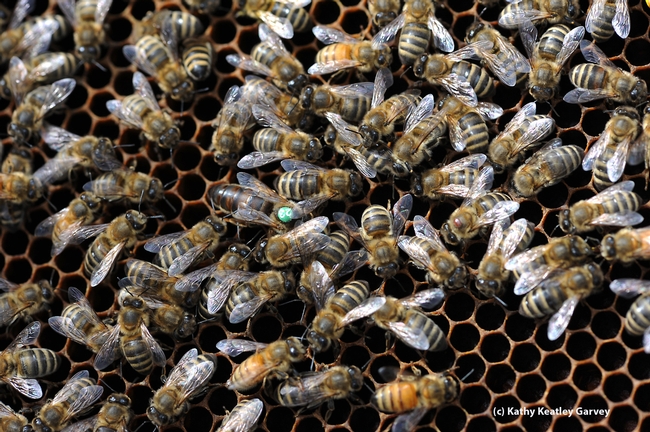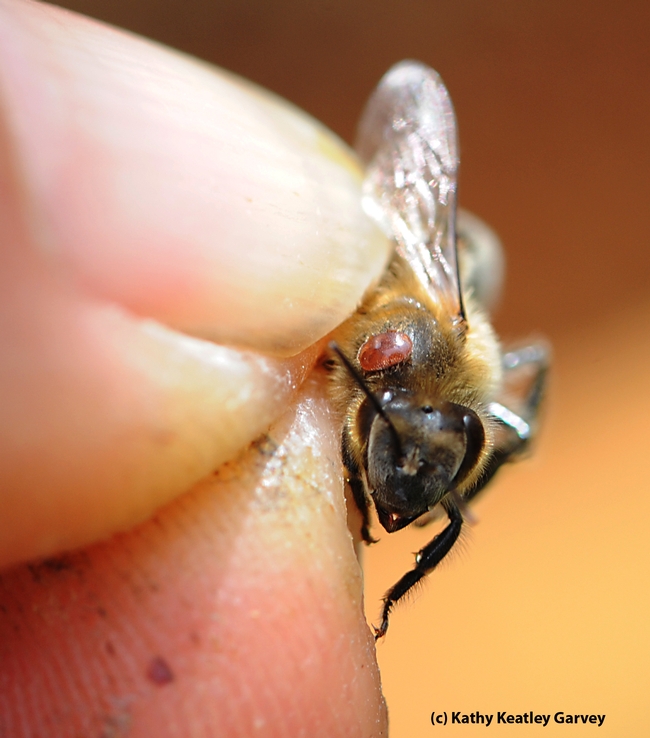
These are terrible blood-sucking parasites that attack bees and raise havoc in the hive. They transmit a variety of diseases and can destroy a hive.
In one of his many talks last year, Extension apiculturist Eric Mussen of the UC Davis Department of Entomology pointed out that honey bee mites include the (internal) tracheal mite (Acarapis woodi), first detected in the United States in 1984, and the (external) Varroa, first discovered here in 1987.
"The tracheal mite killed half of the nation's bees in five years as it expanded across the country," he said. "It was mostly ignored in the last few years."
Then when the Varroa mite arrived, "it killed half of the remaining colonies in five years as it expanded across the country. It killed practically all feral colonies in 1995-96."
"Mite feeding lowers pupal blood protein, resulting in underweight bees, and it shortens the lifespan," Mussen said. "Mite feeding suppresses the honey bee immune system. And, mite feeding vectors RNA virus diseases of honey bees."
Varroa mites, bee scientists agree, are definitely a key factor in the mysterious malady known as colony collapse disorder (CCD). They think CCD is caused not by "a single bullet" but by a multitude of factors, including diseases, pesticides, pests, parasites, malnutrition and stress.
Mussen defines CCD as "the failure of colonies to survive to the next season," and "there's an overwhelming quantity and quality of honey bee stresses."
With CCD, the adult bees abandon the hive, leaving behind the queen, brood and food stores.
So sad. Empty-hive stories, such as this one we heard today from a Davis beekeeper are troubling: "I went to check on my bees yesterday and found the hive empty. The wood was a little mildewy, I think they absconded because hive design needs work. I saw a couple dead yellowjackets in the hive, too, but I don't know if they attacked when there were still bees there or not."
Says Mussen: "Honey bees are stressed by many things. It begins with less naturally occurring food plants. The plants lack the mixed pollens essential for honey bee nutrition."
"It continues with loss of blood and lifespan, as well as infectious inoculations, from Varroa mite parasitism; infections by exotic microbes, especially Nosema ceranae and RNA iruses; and exposure to toxic or 'made toxic' (by adjuvants) chemical residues."
"Is it any wonder that our honey bee colonies are having a hard time surviving?" Mussen asks.
You can catch up on what's troubling the bees and the scientific research under way by reading his bimonthly newsletter, from the UC apiaries, posted on the UC Davis Department of Entomology website.
Attached Images:


